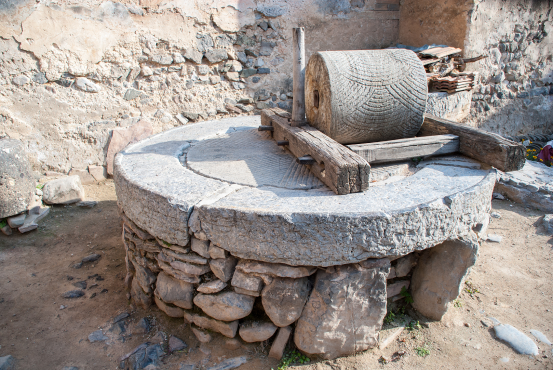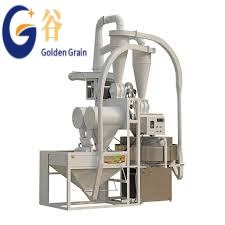The difference between stone mill and roller mill
Nowadays, there are more and more ways to grind grains into powder.
Some still use the original stone mill.
Some have replaced the inefficient stone mill with machines.
Stone milling and mechanical milling are two common grain processing methods.
They have some differences in process, product quality and efficiency.
The following are the main differences between stone milling and mechanical milling:
1. Process principle:

Stone milling: Stone milling is a traditional way of grinding grains into powder using a stone mill.
With its unique wear method, the stone mill can maintain most of the nutrients and flavor in the grain.
Mechanical milling: Mechanical milling uses modern mechanical equipment, such as roller mills or rice mills, to grind grains into powder through high-speed rotating rollers or blades.
2. Grinding efficiency:
Stone milling: Stone milling is relatively slow and has a low output, but it can maintain a high grinding quality.
Mechanical milling: Mechanical milling usually has higher grinding efficiency and output, and can be produced on a large scale,
but may be slightly inferior to stone milling in retaining the nutritional content of grains.

3. Powder quality and nutrition:
Stone milling: Since the stone milling process is relatively slow and generates less heat, it helps to maintain the vitamins, minerals and other nutrients in the grain.
Mechanical milling: Mechanical milling is usually faster and may generate heat during the milling process, resulting in the loss of some nutrients.
4. Product features:
Stone milling: Products made from stone milling often have a better taste and flavor, and are suitable for making traditional foods.
Mechanical milling: Products made from mechanical milling may be relatively uniform and fine, suitable for large-scale production and industrial processing.
In general, stone milling and mechanical milling have their own advantages and disadvantages, and the choice depends on the product requirements, processing scale and demand for product quality. Traditional processes and modern technologies have their own strengths in retaining nutrients and product characteristics, and can be selected according to actual needs.
